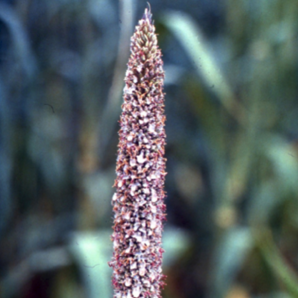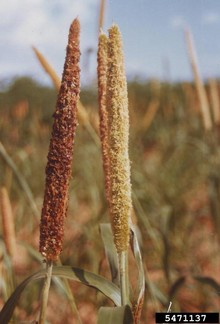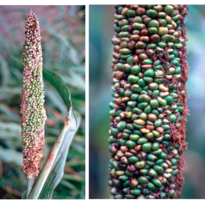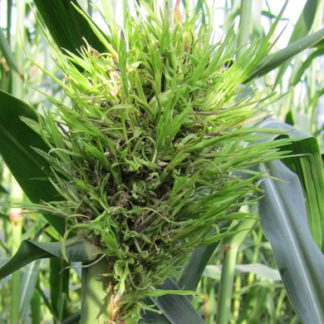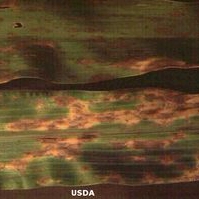Ergot
Caused by: Claviceps fusiformisProblem Category: Fungal Disease
Symptoms: Ergot is a disease of pearl millet grain-bearing heads (inflorescences). The first sign of ergot infection in pearl millet is the appearance of viscous creamy-pink exudations, called honeydew on the flowering heads. Subsequently hard brown spiky structures are formed, called sclerotia.
Comments: Ergot reduces grain yields and constitutes a health hazard to humans and animals that consume pearl millet products contaminated with the alkaloid-containing sclerotia of the causal fungus. It is a particularly serious disease of pearl millet F1 hybrids. Biology and Epidemiology: Infection of the individual florets on a pearl millet inflorescence occurs via the stigmas, i.e. the white feathery structures through which the florets are fertilised following pollination. Initial infection is from spores (ascospores) produced from sclerotia in the soil or in crop debris. Secondary infection is from the spores (conidia) produced in the honeydew. Once the stigmas have been pollinated they rapidly wither and are no longer available as the infection route for the ergot fungus. Pearl millet plants are protogynous, with the stigmas emerging before the anthers. Pearl millet F1 hybrids demonstrate synchronous flowering, so that most of the inflorescences in a crop will be at the protogynous stage with little or no pollen available, which makes F1 hybrids particularly vulnerable to ergot infection. Heavy rain at flowering time washes down pollen, extending the period at which the stigmas are available for infection as well as providing ideal conditions for germination and sporulation of the ergot fungus.
Management: Ergot can be managed in pearl millet, through the use of host plant resistance, pollen management, avoidance and sanitation. Host plant resistance to ergot can be developed using appropriate inoculation, hybridisation and selection techniques. Sources of host plant resistance are developed and made available by public- and private-sector seed companies. It has been shown in research station experiments that using pollen donor plants to coincide with the protogynous stage of crop flowering can significantly reduce infection in ergot susceptible pearl millet F1 hybrids. Avoidance of ergot is achieved through the selection of cultivars that flower during periods of fine dry weather, so that pollen wash and pathogen germination are minimised. Sanitation measures involve the removal and burning of infected inflorescences as soon ergot symptoms are seen. When this is done at the honeydew stage it will reduce secondary spread within the crop. When done at the sclerotial stage it will reduce the inoculum bank for infections in subsequent seasons and reduce the dangers of consumption of the the poisonous alkaloids getting into food and feed products.
Control: spray 2 times 5% Cowdung+Asafoetida solution in 10 days interval.

